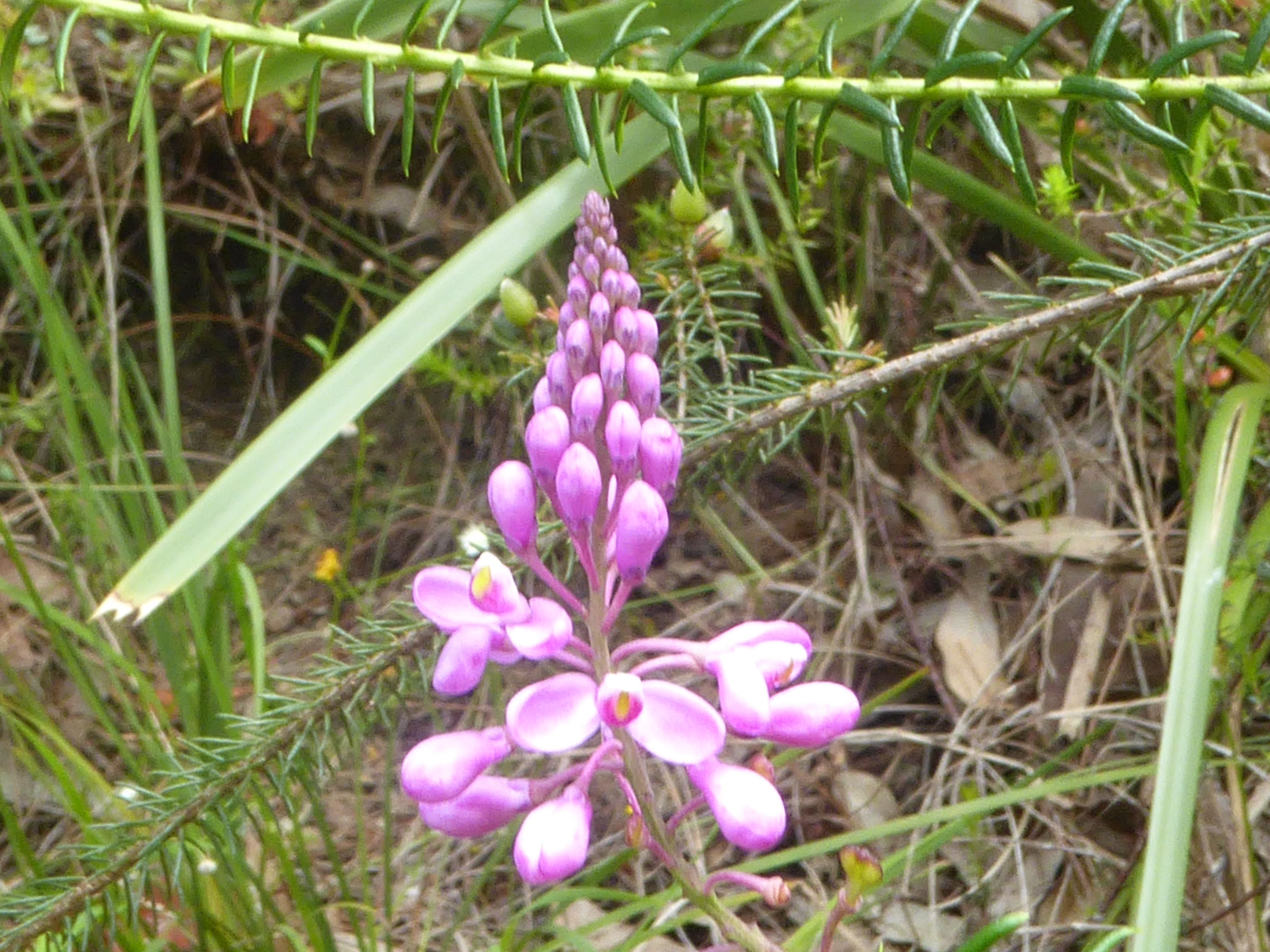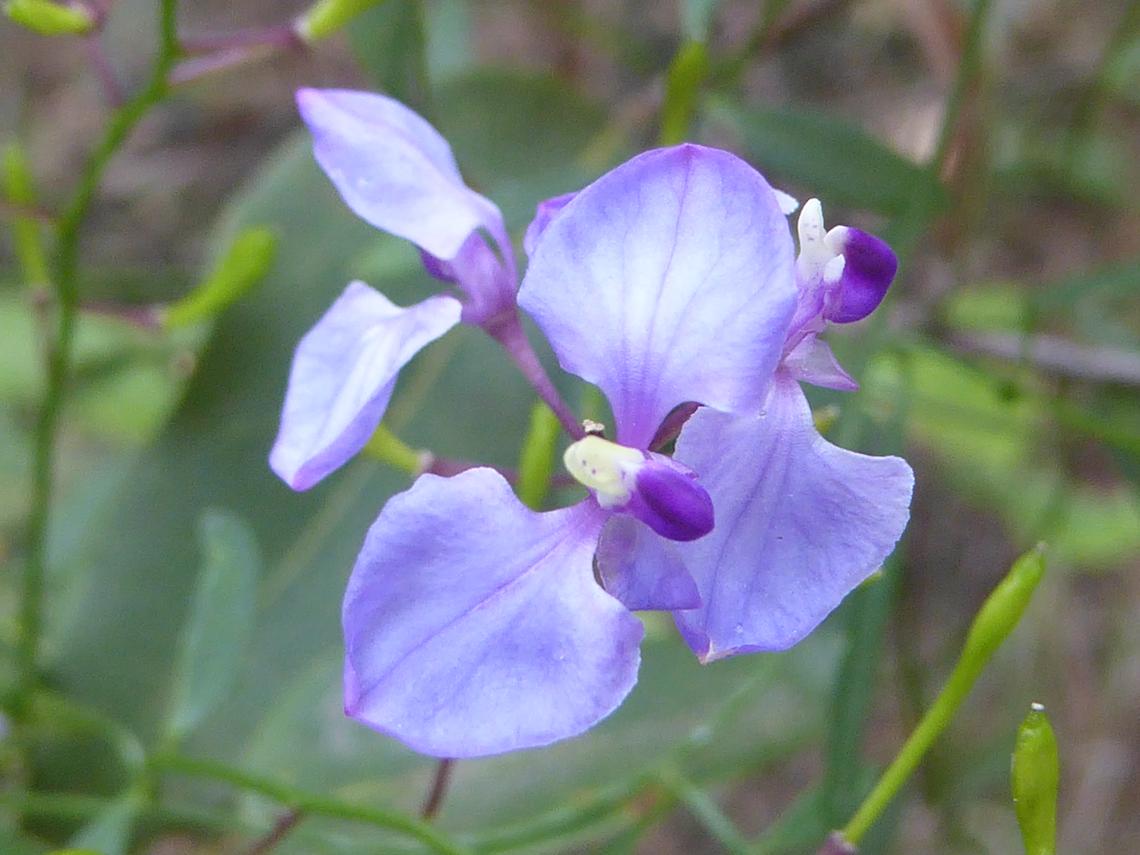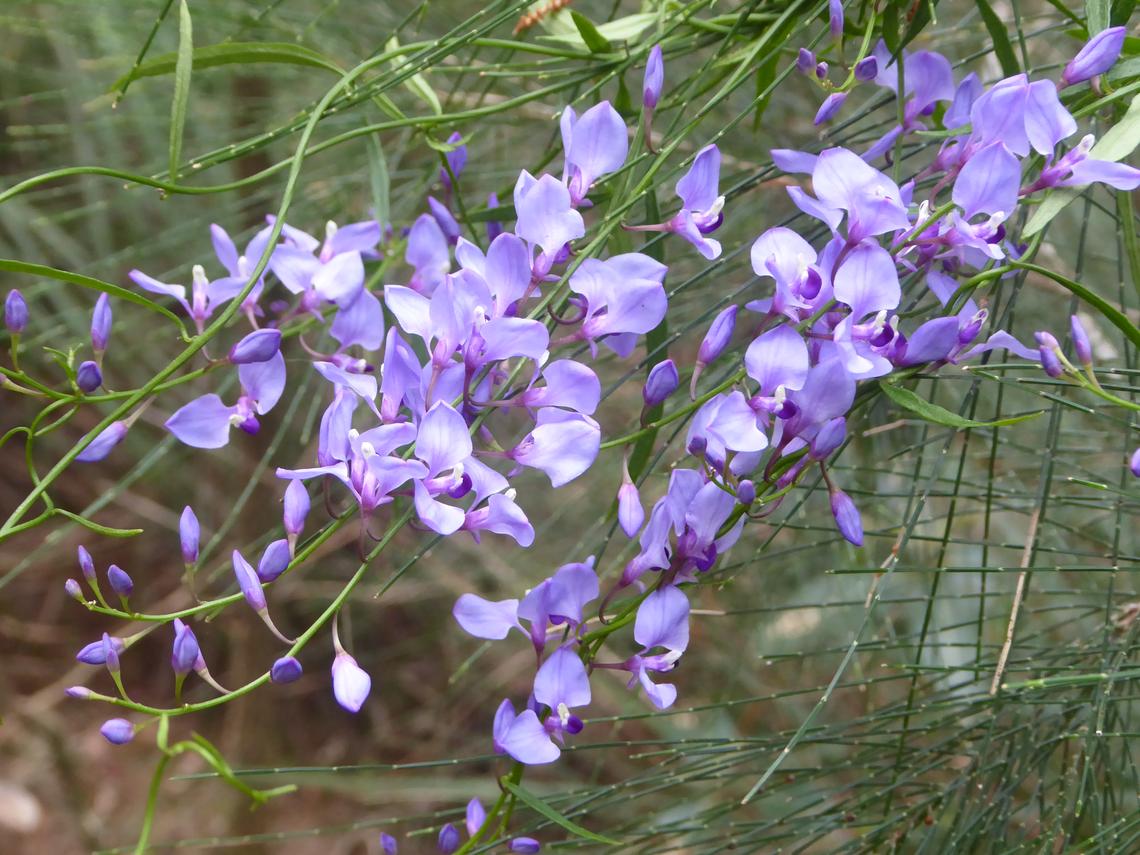
0431 857 407

Milkworts
Milkworts are part of the Polygalaceae family of plants which contains around 900 species spread throughout the warm parts of the world. 40 of these species grow in Australia. Their flowers have some similar features of the well-recognised flowers of the Fabaceae (or Pea) family. Both Polygalaceae and Fabaceae families are part of the Fabales order of flowering plants. Over half of the Polygalaceae species are in one genus Polygala. This name comes from an ancient Greek word meaning "much milk", as some species were thought to increase milk yields in cattle. There were also many other uses of milkwort, as a tea substitute, to help with respiratory ailments and other medical and religious purposes.
In Australia, the native milkwort (Polygala linariifolia), found mainly in northern NSW, is listed as an endangered species. While there are no members of the Polygala genus of milkworts in Katandra, the Sanctuary is host to three species of the closely related Comesperma genus – Comesperma ericinum, C. sphaerocarpum and C. volubile.
The Comesperma genus of milkworts is endemic to Australia with 24 species distributed across all states but mainly in southern areas.The genus name is derived from the Ancient Greek words come ("hair") and sperms ("seed"), relating to the seeds bearing tufts of hair.
Comesperma ericinum, commonly known as Heath Milkwort or Pink Matchheads (pictured right), is a small, erect shrub that grows to about 1 - 1.5 metres high. It is found in heath and woodland on sandstone along the coast and ranges of all eastern states. The leaves are fairly soft and

narrow, about 6 to 20 mm long by 1 to 4 mm wide, with recurved margins. The flowers occur in matchhead-like clusters of buds towards the ends of the branches. Individually the flowers are small (5 to 10 mm long) and are usually richly pinkish purple although white forms are known. Flowering time is mainly in spring but can occur at other times.
Endemic to New South Wales, Comesperma sphaerocarpum is also found along the tablelands and coast in sandy soils. Commonly known as Purple Broom Milkwort, Leafless Milkwort or Fairies’ Wings, it is an inconspicuous plant unless in flower.
The stems are usually leafless, arising from the plant's woody base to a height of 10 to 30 cm. Some leaves may be present as scales towards the base of the shoot. The flowers may be from sky blue to purple-mauve, with two petals displayed like “fairies wings”.
Comesperma volubile, known as Love Creeper (pictured below) grows as a slender twiner with tangled green stems. It has soft, flat leaves about 3cm long and rich pinkish purple flowers. It’s common name of Love Creeper is because the stems tie themselves up in “lover’s knots”.

